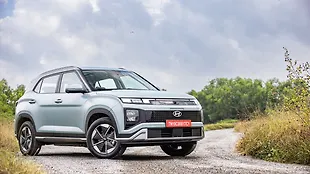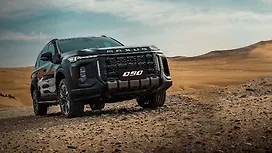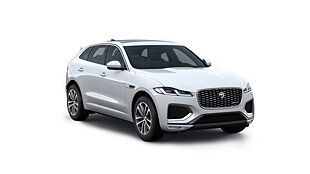Introduction

BMW and Jaguar despite being luxury car manufacturers have always been referred to being sporty and youthful. Their cars have always managed to combine luxuriousness with sportiness seamlessly and this is true to their flagship models too. Yes, calling full-sized limousines like the 7 Series and the XJ sporty might sound a bit absurd, but still compared to the competition they have always been more involving from behind the wheel.
In its sixth generation, the new 7 Series has gone through a complete transformation and though it doesn’t look too different as compared to the old car, underneath, it gets an all-new chassis which is made from high strength steel, aluminium and carbon fibre. On the inside, it is more luxurious, comfort is first rate and equipment levels are enormous.
Despite being nearly seven years old, the Jaguar XJ still comes as a breath of fresh air in an otherwise German dominated segment. The XJ’s fluid form makes it look more like a coupé than a saloon and it possesses an aura which makes it very appealing and helps it stand out from the crowd. The XJ has received some recent updates too which has gone a long way in making this Jaguar even more tempting.
So which of these sporty limousines should you splurge your hard earned dough on? Read our detailed comparison to find out.
First glance

The BMW definitely looks striking thanks to its prominent kidney grille and the beautifully detailed LED headlamps. In profile, the strong shoulder-line and the massive 19-inch wheels make it look dynamic and sporty. At the rear, the complex tail lamps and the twin exhaust pipes make it look interesting. Looked at from any angle the BMW looks proportionate and well balanced.
Where the BMW has a traditional three-box design, the Jaguar looks more like a fastback thanks to the tapering roofline merging into the stubby boot. This alone gives it immense presence and elements like the signature Jaguar gaping grille and the slim LED headlamps look very attractive. The XJ looks like nothing else on the road and it definitely looks more special than the BMW.

The Jaguar is the bigger car too, with it being 36mm longer and 13mm wider. But it’s the BMW which boasts of a longer wheelbase which gives it a crucial advantage in terms of packaging. Both these cars use loads of aluminium bits to keep the weight down. But BMW goes further by having carbon fibre elements to further shed weight and make the body more rigid. As a result the BMW 730d at 1950kg is 38kg lighter than the Jaguar XJ L.
Business class comfort

Like the exterior, BMW breaks no new ground with the interiors of the sixth generation 7 Series. The design is quite familiar and even the centre console design looks similar to the old Seven. But when you look closely you will be staggered by the attention to detail in this BMW. The dashboard materials and craftsmanship is top drawer and this is where BMW has a decisive advantage over the Jaguar.

With the facelift, Jaguar hasn’t altered the basic layout of the cabin which is no bad thing. You get a dashboard that looks charming and the prominent crease that runs along the top of the dash gives it a distinct identity and a feeling of cocooning the passengers. Quality of materials is good, but in a few places, you’ll find the odd cheap-feeling bit, like the plastics around the gear selector look low-rent and even some of the buttons look tacky and out of place on this one crore plus car. Even the touchscreen infotainment system lacks the crispness of BMW’s iDrive unit and its slow processing speed can be irritating at times. The TFT screen that replaces the speedo and tacho dials look pixelated and could do with an update.

In terms of comfort, upfront there is not much to separate the two. Despite its smaller dimensions the BMW 7 Series has much more kneeroom, shoulder room and headroom than the XJ. The front seats on the 730d are just fantastic and they adjust for height, contour and squab. It also feels the airier of the two and the light colours help make it a pleasing place to be in. If the front seats are fantastic the BMW’s rear bench is exceptional. You get pampered by a bench that reclines, adjusts for thigh support and has a massage function which makes it a place hard to get out of. Rear space will make your house feel cramped and thanks to the large windows and great seat height, it’s a very nice place to be in.

The Jaguar, on the other hand, is comfortable too. The large front seats are very accommodating and the seat cushioning is spot on. But as soon as you shift to the back seat of the XJ, one thing is for certain, it lags behind the BMW in every respect. There is less space and the seat itself is not as comfy as the 730d’s. Kneeroom is just about adequate and the restricted headroom is a result of Jaguar preferring style over function. What makes matters worse is the high window-line and the slim glasshouse gives you a helmed in feeling.

Even when it comes to equipment, the BMW is head and shoulders above the Jaguar. The 730d in this M Sport trim gets a four-zone automatic climate control,powered rear seats with eight massage programmes, a panorama glass roof with LED light graphics, a Harman Kardon surround sound system, navigation system with 3D maps, a very intuitive iDrive with touch screen and gesture control, a removable Samsung android tablet that controls almost every function in the cabin and a digital key fob that even tells you how much fuel range your 7 Series has while you are sitting in office.

The Jaguar is pretty well equipped too and it gets electric rear seats, a panoramic sunroof, four zone climate control, heated steering and a fantastic sounding 825 Watt Meridian sound system. Sure, it is much cheaper than the BMW, but more tech especially in this class is a must.
Torque of the town

Central to the 730d’s appeal is its engine. It’s the same direct-injection, 3.0-litre turbodiesel inline six cylinder engine that did duty on the old car. Producing a very healthy 262bhp and 620Nm of torque from a low 2000rpm. Despite having less power than the Jag, the BMW decimates it on performance. With locomotive-like thrust, the engine is never short on grunt. The tremendous pulling power this engine musters instantaneously is so addictive that you have to make a conscious effort to stay at prudent speeds. 0-100kmph is demolished in a sports car rivalling 6.29 seconds, and it will cross 180kmph in 20 seconds dead. The ZF sourced gearbox is quick and very obedient, downshifting almost every time you want it to.

Like the BMW, the Jaguar XJ also uses a velvet-smooth 3.0-litre motor too. But it gets a twincharger and the six cylinders are arranged in a V formation. Pumping out a massive 296bhp and 700Nm of torque, the Jag is by far the most powerful car on paper. However, it’s not the quickest. Some of that is down to the fact that the engine has quite a bit of lag under 2000rpm and the throttle response is not as fluid as you’d like in slow-moving traffic. But give it some space and this engine is happy to show you its best side, starting with the terrific surge once the turbos kick in. Although the XJ is paired to what essentially is the same gearbox as the BMW, they feel poles apart. The gearshifts are smooth, but on the slow side, and it can’t match the alert nature of the same eight-speed auto in the BMW. The motor is not as free revving as the 7 Series’s too and you can hear the motor more especially when worked hard.

As a result the XJ posted times which were much slower than the 730d. 100kmph comes up in a more leisurely 7.69 sec. The motor’s blunt throttle response also meant, in gear times of 4.81 seconds for 20-80kmph and 5.61 seconds for 40-100kmph were 1.1 second slower than the Beemer in both runs.
Sprightly giants

Both these cars use sophisticated suspensions that have been fine-tuned for India. In pursuit of giving the 7 Series a more comfortable ride than before, BMW has moved to full air suspension.Set in 'Comfort' mode, small imperfections are smothered comfortably. It's only sharper expansion joints and potholes that get relayed into the cabin with a thud as the car runs out of clearance. But on the flip-side there is a fair bit of body movement over uneven surfaces. Ride is a lot flatter in sport mode but the suspension also tends to crash a lot more and this is where the Adaptive mode works best, where the suspension constantly changes the firmness according to the road condition.
The Jaguar on the other hand has a stiffer setup and at low speeds you feel the bumps a bit more than in the 7 Series. But as soon as you gather more pace the XJ smothers sharpest of potholes with ease while keeping the body movement in check. But you can hear the suspension more in the Jag and sound insulation is not as good as the BMW too.
Thanks to the soft setup the BMW rolls into corners quite dramatically and it even squats down on its haunches under hard acceleration. The net effect is that you have to scale back on pace and hence can’t make the most of the nicely weighted steering on a series of bends. You do get loads of grip from the wide tyres though and once used to the size and weight you can have some fun in the BMW.

But it’s the Jaguar which feels more willing to change direction, as it feels smaller and more manageable of the two. What further aids the Jag’s appeal is the fluidity and directness of the steering. Yes, it doesn’t weigh up as consistently as the BMW’s but once you get the hang of it, it’s not such a big deterrent.
Both these cars have huge overhangs and long wheelbases. As a result they are vulnerable over large speed breakers as it is quite easy to scrape their underbellies. And this feels worse than fingernails on a blackboard. There is a lift mode in the 7 Series to increase the car’s clearance by 20mm but that too doesn’t help over some bad sections.
The brakes of both the cars felt quite good but the Jaguar’s pedal feel is more linear. This we feel is down to the regenerative braking system used on the BMW.
But all this tech and combined with the start stop systems helped the Beemer register better efficiency figures. The 730ld managed a decent 8.6kmpl in the city and 12.6kmpl on the highway. The Jaguar wasn’t far behind with figures of 8.1kmpl in the city and 11.9kmpl on the highway
Verdict

Rank 2
Jaguar XJ L 3.0D Portfolio
Final Score: 413/600
Price: Rs 1.07 crore (Ex-showroom, Delhi)
There’s lots to like about the Jaguar XJ. It looks unique and is also the cheapest limo here. Front seat comfort is really good, overall build quality is solid and ride and handling balance is better than the 730d. But now in this more modern company the XJ has started to feel a bit old. Its performance though good, is not a match to the BMW; the interior quality in places is mediocre, is not as well equipped and space and comfort is second best too.

Rank 1
BMW 730Ld M Sport
Final Score: 436/600
Price: Rs 1.22 crore (Ex-showroom, Delhi)
The 7 Series wins this test because it manages to deliver sufficient thrills while still being an uncompromised luxury car in every other way. Lovely to drive and be driven in, the 730d is rounded enough to recommend to those who split their time between the front and the rear seats. Sure, the ride could have been better judged but other than that it is hard to fault this impressive limousine. It justifies its higher price tag too thanks to the long list of equipment on offer.

Specification
| CAR NAME | BMW 7 Series |
Jaguar XJ L |
| Variant | 730Ld M Sport | 3.0 Portfolio |
| ENGINE | ||
| Fuel | Diesel | Diesel |
| Installation | Front, longitudinal | Front, longitudinal |
| Displacement | 6 cyls, 2993cc | 2993cc, V6 |
| Bore/stroke | 90.0/84.0mm | 90.0/84.0mm |
| Valve gear | 4 valves per cyl DOHC | 4 valves per cyl DOHC |
| Power | 262bhp at 3600rpm | 296bhp at 4000rpm |
| Torque | 620Nm at 2000rpm | 700Nm at 2000rpm |
| Power to weight | 134.35bhp per tonne | 148.89bhp per tonne |
| Torque to weight | 317.94Nm per tonne | 352.11Nm per tonne |
| Gearbox | 8-speed automatic | 8-speed automatic |
| CHASSIS & BODY | ||
| Kerb weight | 1950kg | 1988kg |
| Tyres | 275/40 R19 | 245/50 R18 |
| Spare | Space saver | Space saver |
| STEERING | ||
| Type | Rack and pinion | Rack and pinion |
| Type of assist | Electric | Electric |
| Turning circle | 12.8m | 12.7m |
| BRAKES | ||
| Front | Ventilated Discs | Ventilated Discs |
| Rear | Discs | Discs |
| Anti-lock | Yes | Yes |
Test Data
| CAR NAME | BMW 7 Series | Jaguar XJ L |
| Variant | 730 Ld M Sport | 3.0 Portfolio |
| PERFORMANCE & BRAKING | ||
| 0-20kmph | 0.92s | 0.87s |
| 0-40kmph | 1.78s | 1.88s |
| 0-60kmph | 2.95s | 3.33s |
| 0-80kmph | 4.48s | 5.34s |
| 0-100kmph | 6.29s | 7.69s |
| 0-120kmph | 8.56s | 10.94s |
| 20-80kmph in 3rd gear | 3.78s | 4.81s |
| 40-100kmph in 4th gear | 4.45s | 5.61s |
| 80-0kmph | 24.23m | 23.45m |
| FUEL ECONOMY | ||
| City | 8.6kmpl | 8.1kmpl |
| Highway | 12.6kmpl | 11.9kmpl |
| Tank size | 78 litres | 83 litres |
| Range | 700km | 710km |
| INTERIOR MEASUREMENTS | ||
| Front | ||
| Knee room(Max/min) | 800/560mm | 810/590mm |
| Headroom(Max) | 1000/920mm | 940/890mm |
| Shoulder room | 1430mm | 1380mm |
| Backrest height | 650mm | 630mm |
| Rear | ||
| Headroom | 940mm | 920mm |
| 1m kneeroom | 900mm | 850mm |
| Shoulder room | 1410mm | 1390mm |
| Knee room(Max/min) | 1010/780mm | 970/740mm |
| Seat length | 510mm | 550mm |
| Backrest height | 660mm | 660mm |
| Boot | 450litres(calculated) | 511litres(calculated) |
| Depth/width/height | 1090/1060/390mm | 1050/1060/460mm |
| Loading lip height | 700mm | 730mm |
Score sheet
| Parameters | Max points | BMW 730 Ld M Sport |
Jaguar XJ L 3.0 Portfolio |
| DRIVING FEEL | |||
| Steering response | 20 | 13 | 12 |
| Directional stability | 25 | 16 | 16 |
| Engine characteristics | 25 | 19 | 17 |
| Gearbox | 20 | 17 | 15 |
| Visibility | 10 | 7 | 7 |
| Intermediate results | 100 | 72 | 67 |
| SPACE | |||
| Front Space | 25 | 18 | 15 |
| Rear space | 25 | 19 | 17 |
| Feeling of space | 20 | 18 | 14 |
| Boot space/flexibility | 20 | 15 | 16 |
| Payload | 10 | 9 | 6 |
| Intermediate results | 100 | 79 | 68 |
| IN THE CABIN | |||
| Comfort equipment | 25 | 24 | 24 |
| Operatibility | 15 | 12 | 11 |
| Feel of quality | 20 | 16 | 15 |
| Front seats/ingress | 20 | 18 | 17 |
| Rear seat/ingress | 20 | 18 | 16 |
| Intermediate results | 100 | 88 | 83 |
| PERFORMANCE | |||
| Acceleration | 25 | 25 | 25 |
| Top speed | 10 | 10 | 10 |
| Driveability | 30 | 30 | 30 |
| Braking | 25 | 21 | 21 |
| Environment | 10 | 4 | 4 |
| Intermediate results | 100 | 90 | 90 |
| ROAD MANNERS | |||
| Ride quality | 30 | 23 | 23 |
| Turning circle | 15 | 11 | 11 |
| Handling | 20 | 12 | 13 |
| Manoeuvrability | 15 | 9 | 9 |
| Safety | 20 | 20 | 17 |
| Intermediate results | 100 | 75 | 73 |
| PRICE | |||
| Price | 45 | 5 | 5 |
| Resale | 10 | 6 | 6 |
| Warranty | 10 | 7 | 7 |
| Fuel efficiency | 35 | 14 | 14 |
| Intermediate results | 100 | 32 | 32 |
| Total | 600 | 436 | 413 |


























